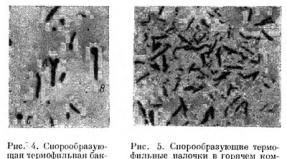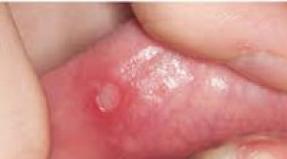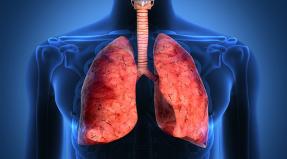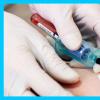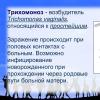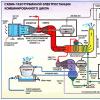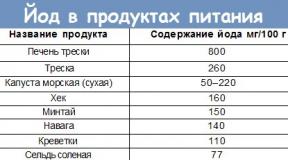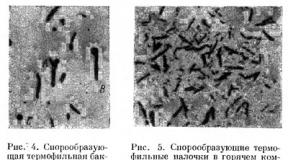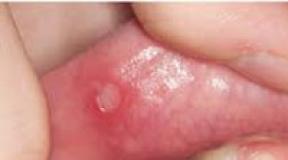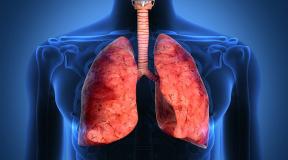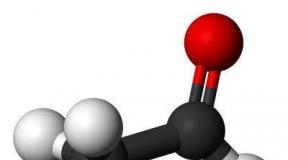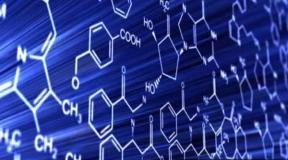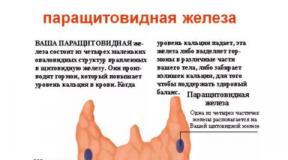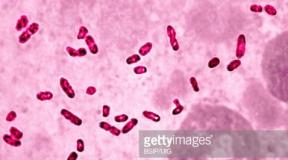Alcoholic muscular dystrophy. Alcohol and muscles (alcoholic myopathy): causes and treatment. Damage to the peripheral nervous system
Alcoholic myopathy
In addition to the well-known alcoholic peripheral neuropathy and the tendency to develop skeletal lesions, alcoholics are predisposed to at least one type of peculiar myotic syndrome. During a period of prolonged heavy drinking, such a patient may experience severe pain and swelling of the muscles, muscle twitching and severe weakness. Signs and symptoms may be generalized or focal. This syndrome represents acute diffuse necrosis of skeletal muscle fibers (all of them are in the same stage of degeneration), or acute rhabdomyolysis. Muscle degeneration can lead to life-threatening hyperkalemia or hypocalcemia and secondary binding of calcium without intracellular release of PO4; in this case, myoglobinuria can contribute to the development of renal failure. In alcoholics with acute muscle pain and weakness, serum electrolytes and muscle enzymes are measured, as well as a urine myoglobin test. Although most of these patients recover within a few weeks, normalization of motor function may take many months.
Myasthenia gravis
Although myasthenia gravis is not a true myopathy, its initial symptoms and examination data of the patient are very similar to those of other myopathic diseases.
Acute periodic paralysis
Among acute muscle weakness syndromes, acute periodic paralysis seems to be the most bizarre and strange. There are three main types of the disease, its primary forms: hyperkalemic, hypokalemic and normokalemic. The exact mechanisms of pathogenesis of these types of paralysis are not entirely clear, but electron microscopy reveals an abnormal number of mitochondria and abnormalities of the sarcoplasmic reticulum.
Patients with periodic paralysis are very often sent from the emergency department with a false diagnosis of “hysteria.” Suspicion of periodic paralysis rarely arises before the ninth or tenth attack. Periodic paralysis occurs predominantly in men (the incidence ratio in men and women is 4:1 or 5:1) and usually occurs between the ages of 7 and 20 years.
Interestingly, when muscle weakness occurs during sleep, patients often wake up. A history of physical overload on the day of the attack is of great diagnostic importance. An attack can be triggered by hypothermia, overeating, trauma and surgery. In some patients, attacks occur regularly, almost daily, while in others they occur only a few times in their lives. Patients usually report the sudden onset of extreme muscle weakness, not associated with any pain. Patients feel completely normal before and after the attack, which usually lasts 1-2 hours and can be so severe that it leads to falling or vomiting (while eating).
A comprehensive description and discussion of the various forms of periodic paralysis and congenital paramyotonia are beyond the scope of this review, however, understanding the pathogenesis of such attacks should prompt the emergency department physician to conduct a preliminary diagnosis of the disease, determine the serum potassium level and provide consultation with a neurologist.
There are acute, I'll make it more acute And chronic alcoholic myopathy.
In all forms, muscle pain, swelling, and pain in a wide variety of localizations occur; numerous skeletal muscles are involved in the process. In severe cases, widespread necrosis of muscle fibers, myoglobinuria with kidney damage are observed.
Damage to the peripheral nervous system
Among the lesions of the peripheral nervous system, radial nerve palsy with the development of “ drooping brush", arising after another alcoholic excess. In some cases, a clinical picture of brachial plexopathy is observed with complete paralysis of the arm and anesthesia; pain syndrome occurs during the recovery stage. The nature of these injuries is associated with prolonged ischemia as a result of compression (“ garden bench paralysis"- a patient in a state of intoxication falls asleep deeply, throwing his hands on the back of the bench).
Alcoholic polyneuropathy usually more severe and often affects the lower extremities, and may have a recurrent course. In the initial stages, as a rule, there is pain in the feet and calf muscles, a feeling of numbness in the feet and hands. Subsequently, a decrease in the sensitivity of the extremities develops in the form of “gloves” and “socks”, sometimes deep sensitivity suffers more. In the latter case, tendon reflexes disappear faster, coordination of movements is impaired, and a clinical picture of pseudotabes is observed. Unlike tabes dorsalis, it is characterized by pain when the calf muscles are compressed. Some patients may experience symptoms of damage to the peripheral nervous system such as mixed polyneuropathies with the addition of atrophic paresis.
At chronic alcoholism so-called tobacco-alcohol amblyopia may be observed - atrophy of the optic nerves with a sharp drop in visual acuity similar to retrobulbar neuritis.
One of the negative aspects of drinking alcohol is that muscles hurt after drinking alcohol. Scientifically, this disease is called alcoholic myopathy. Such symptoms are found both in a specific area and throughout the body. “Aches” appear in the arms, legs, shoulder girdle, back, joints hurt, and “twists” in the calves.
Important! If pain appears only in the shoulders and neck, it may be osteochondrosis. In this case, muscle pain can be either the result of binge drinking or occur after a single binge.
The reason why flexor-extensors and sphincters-constrictors hurt after alcohol intoxication lies in a whole complex of homeostasis disorders.
Factors causing pain are:
- dehydration;
- poisonous effect of alcohol breakdown products;
- removal of microelements and nutrients from the blood;
- accumulation of lactate in muscles.
Dehydration
Cellular metabolism requires an optimal supply of water to the body. Any drinks containing ethanol have a diuretic effect, lead to the removal of vitamins and minerals, dehydration, disruption of water balance and metabolism, which causes a person to experience pain, in particular, sore leg muscles. And in some cases, muscle spasm occurs.
In the liver, alcohol is broken down into its components, one of which is acetaldehyde. This substance is extremely toxic, its accumulation causes a number of unpleasant reactions called “hangover”:
- nausea;
- migraine;
- weakness;
- lethargy;
- increased acidity (acidosis).
One of the manifestations of the toxic effect of acetaldehyde is muscle pain.
 Acetaldehyde formula
Acetaldehyde formula Lack of energy and electrolytes
Poisoning from beer, vodka, wine, liqueurs, etc. affects the receptors' ability to control blood glucose levels and leads to a decrease in blood glucose levels, known as hypoglycemia. A drop in sugar levels determines a decrease in the supply of energy resources to the muscles, which is manifested by “ache,” and a lack of potassium, calcium and magnesium can lead to cramps.
Lactic acid
Quenching your thirst after exercise with alcohol-containing cocktails can also lead to muscle pain. When exercising in the gym, lactic acid accumulates in the striated muscles. Ethanol interferes with its normal breakdown and excretion, and excessive accumulation of this metabolite leads to myalgia.
Types of pain
The pain after a drunken feast can be dull, aching, “aching”, accompanied by a burning sensation, trembling of the limbs, knees, a decline in muscle tone and persist for a long time. This depends on the amount you drank the day before and the frequency of intoxication throughout the month.
A single exposure to a large dose of ethanol can mediate the onset of discomfort and persist for up to several days. If there is systematic drunkenness, then muscle pain is often chronic and does not go away due to the fact that the spasmodic fibers are constantly under the toxic influence of alcohol.
Help with myalgia
Treatment for alcoholism is aimed at eliminating stressors affecting internal organs and systems, as well as improving blood flow to deliver nutrients and remove alcohol dissociation products.
Quitting alcohol
If drinking alcohol continues for several days (weeks), it is first of all important to stop ingesting ethanol in any form and refrain from drinking. Do not “get a hangover” under any circumstances, as the temporary relief obtained from the “hangover dose” will be replaced by even more serious illnesses.
Rehydration
To restore water balance, it is necessary to replenish fluid deficiency. To do this, drink 0.5-1 liters of water. Suitable for both regular drinking water and mineral water containing bicarbonates and minerals. Then drink one glass every 30-40 minutes for 2-4 hours. This drinking regimen replenishes H2O losses and ensures the excretion of toxic metabolites in the urine.
Vitamin and mineral deficiency
Multivitamins, including C, B6, B12, PP, as well as K, Mg, Ca, can help restore the required level of microelements after drinking alcohol.
Apples, dried apricots, nuts, honey, raisins, prunes, legumes, grapes, bananas have a positive effect. You can brew a mug of weak black or green tea.
Relaxation activities
A warm bath, massage or self-massage, and light warm-up will help relieve pain. These procedures, improving peripheral blood circulation, increase blood flow and the removal of harmful substances.
Medicines
To relieve pain, you can use painkillers:
- Nurofen;
- Ketoprofen;
- Askofen.
Anti-hangover pills:
- Alka-Seltzer;
- Zorex.
- A dry heat compress has a good analgesic effect. Pour salt or sand into a canvas bag and heat in the oven. Next, wrap it in a towel and apply it to the discomfort area.
- You can also take boiled crushed potatoes, which are placed in a plastic bag, wrapped in thick cloth and warmed up the muscle tissue.
- You can use a plastic bottle with hot water as an improvised heating pad.
- Rubbing the painful areas with apple cider vinegar helps eliminate myalgia.
Precautionary measures
Any drug therapy and traditional methods must be agreed with the doctor. Saunas, steam baths, jogging, exercise equipment, and any prolonged physical activity are contraindicated, due to the fact that there is a significant risk of developing complications from the cardiovascular system. In case of severe, prolonged pain, a visit to a medical facility is indicated.
Alcoholism is a pathological condition that affects the muscles of the human body and some internal organs. These diseases are combined into one group because they have only one cause - alcoholism.
Ethyl alcohol, as well as its breakdown products, have a toxic effect on almost all human organs and systems, but muscles are most susceptible to destructive effects. Moreover, this happens when protein and carbohydrate metabolism are disrupted, and this is precisely the main impetus for the development of the disease. Against this background, muscle tissue cells gradually die, and the muscles themselves undergo a process of atrophy, that is, they become significantly smaller in size. In addition, destruction processes begin in the muscle tissue itself, which looks like necrosis.
Main symptoms
Alcohol myopathy comes in two types: acute and chronic. Acute develops during the period of heavy drinking and is expressed in symptoms such as:
- Severe tremors not only of the limbs, but also of the voice, which becomes prone to hoarseness.
- Problems with swallowing.
- Urinary and fecal incontinence.
- Inability to stay upright.
The acute stage is followed by the chronic stage, which, even with the slightest intake of alcohol, turns back into acute. In this case, the muscles become very flabby, but their contractile activity remains. If the binge lasts for many days, then muscle fiber cells - myoglobin - appear in the urine, and the condition is called myoglobinuria.
In the chronic course of the disease, the symptoms become slightly different:
- Quick fatigue of the muscles of the calves and shoulders, as well as stiffness in the neck, numbness in the fingers.
- The muscles become very flabby, their ability to contract disappears, the patient cannot completely strain his arm or leg. There is also significant weight loss and lethargy.
- Reduced levels of phosphate and potassium, which negatively affects the general condition.
- Pain, swelling and tightness of muscle tissue, which is especially noticeable in the legs.
- Nausea, vomiting, which gradually lead to dehydration.
All these manifestations require urgent medical intervention, since without this, irreversible phenomena can occur in the muscles, which will be impossible to cope with in the future.
How to get rid
The first thing that should be done when starting treatment for alcoholic myopathy is withdrawal from binge drinking. Here you cannot do without the help of not only a narcologist, but also a psychotherapist, or even a psychiatrist. It is advisable to carry out all procedures at home.
 In addition, patients during this period often experience a condition such as delirium tremens, which is also called delirium tremens. During this condition, heart attacks and strokes, epileptic seizures and complete exhaustion of the body may develop.
In addition, patients during this period often experience a condition such as delirium tremens, which is also called delirium tremens. During this condition, heart attacks and strokes, epileptic seizures and complete exhaustion of the body may develop.
After withdrawal from the binge, the issue of further therapy is resolved. As a rule, this requires placing the person in a specialized hospital. With the help of intravenous infusions, electrolyte balance is restored. These are solutions such as glucose or sodium chloride. Along with this, sodium thiosulfate, magnesium sulfate, potassium chloride, Cavinton, Mexidol, mildronate, sulfocamphocaine, nicotinic acid, ascorbic acid, and some other vitamins are introduced. All doses are selected strictly individually and it all depends on the condition of the patient. The duration of treatment will also depend on the general condition of the patient and the presence of concomitant diseases.
The main medications to be prescribed are magnesia, which prevents seizures, piracetam, which improves cerebral circulation, panangin, which stabilizes the heart, and vitamins of various groups that have a beneficial effect on all organs and systems.
During treatment, proper nutrition is provided with plenty of fluid in the form of juices, fruit drinks, herbal teas, and mineral water. Treatment should not take place without the participation of a narcologist. In this case, medications such as disulfiram, lidevin, teturam, naltrexone, antaxone are prescribed.
This treatment is not aimed specifically at restoring muscle tissue. All therapy is carried out in order to restore the general condition, which means that the muscle tissue will be in good condition and no symptoms of alcoholic myopathy will be observed.
Epileptic seizures. Most often, seizures are associated with withdrawal symptoms (withdrawal seizures). They usually occur 7 to 48 hours after the last intake of alcohol against the background of other manifestations of withdrawal syndrome (tremor, irritability, sleep disturbances, hallucinations, tachycardia). Withdrawal seizures are generalized tonic-clonic seizures. Often there is not one seizure, but a series of 2 to 6 seizures, between which the patient recovers. Status epilepticus occurs rarely and requires the exclusion of additional factors (traumatic brain injury, meningitis, hypoglycemia, hyponatremia). Seizures should be considered as a harbinger of alcoholic delirium, which usually occurs 1 to 3 days after the seizures.
Acute alcoholic encephalopathy (Gay-Wernicke-Korsakoff encephalopathy, alcoholic beriberi disease, hypovitaminosis B 1 , hemorrhagic polioencephalitis (Haye-Wernicke) manifested by the classic triad - ophthalmoplegia, ataxia, impaired consciousness. Clinical symptoms are associated with dysfunction of the oral parts of the brain stem, its connections with the cerebellum and temporal lobes. The immediate cause is a deficiency of vitamin B1 (thiamine), associated with malnutrition, malabsorption, or depletion of its hepatic reserves. The development of encephalopathy is often preceded by a long period of malnutrition, but the final trigger is injury, infection, or the administration of glucose, which “burns” thiamine reserves. Symptoms develop acutely or subacutely. Apathy, drowsiness, inattention, and disorientation appear. Depression of consciousness may progress, but coma occurs infrequently. Some patients experience hallucinations, agitation, and confusion, reminiscent of delirium delirium. Diagnosis becomes easier with the appearance of oculomotor disorders - double vision, nystagmus, limited mobility of the eyeballs (usually due to the type of bilateral lesion of the abducens nerves), less commonly, paralysis of horizontal or vertical gaze. Ptosis and internuclear ophthalmoplegia are extremely rare. Pupillary reactions are usually preserved. Ataxia, mainly of the trunk, makes standing and walking difficult (dysbasia); only some patients experience significant coordination problems in the limbs.
It should be noted that Wernicke encephalopathy can develop not only with alcoholism, but also with other conditions of malnutrition, malabsorption and metabolic disorders not related to alcoholism. These include: excessive vomiting during pregnancy, malignancy, gastrointestinal surgery, hemodialysis or peritoneal dialysis, long-term parenteral nutrition, AIDS.
Korsakov's amnestic syndrome in approximately 50% of cases it develops acutely after massive and prolonged alcohol intoxication with the development of a number of psycho-somato-neurological disorders - severe alcoholic delirium, convulsive seizures, confusion, etc. After recovery from delirium, patients exhibit typical amnestic disorders - the inability to record current events or impaired memorization of new material ( fixation amnesia). Immediately after presentation, the patient is able to repeat all the words spoken to him, but completely forgets them after 1 - 2 minutes. Memory for events preceding the disease, especially recent ones (retrograde amnesia), is also impaired, but not for distant events. The consequence of amnesia is a violation of orientation in time and space. Patients cannot find their room, remember where they are, what they recently ate, or who visited them a few minutes ago. Patients are not critical of their defect and often deny the presence of the disease. Possible false memories in the form of pseudo-reminiscences(memory deceptions, which consist in shifting the time of events that actually took place in the patient’s life; events of the past are passed off as the present) and confabulation(a type of false memory: patients report fictitious events that did not actually take place during the period in question).
In severe cases, patients stop taking care of themselves, lie in bed, and are sloppy. Usually they lie quietly, their face maintains a calm expression, their facial expressions are sluggish. The gaze is fixed on one point, they do not engage in conversation on their own.
In other cases, Korsakoff amnestic syndrome can develop gradually, and patients are able to maintain working capacity for a long time. Speech, as a rule, is not impaired, but intellectual abilities may be reduced.
Pellagra (deficiency of nicotinic acid or tryptophan), manifests itself in a detailed form with skin, gastrointestinal, hematological and neurological symptoms. Early manifestations of the nervous system are “neurotic” complaints of sleep disturbances, fatigue, irritability, decreased mood, apathy and memory loss. Sometimes acute psychotic episodes develop in the form of confusion. If left untreated, they can progress to dementia. Symptoms of myelopathy (involving the posterior and lateral columns of the spinal cord) and polyneuropathy may appear.
Corpus callosum degeneration syndrome . Primary degeneration of the corpus callosum Marhiafawa-Binyami is manifested by demyelination of the central part of the corpus callosum in adulthood and old age in patients with alcoholism. Clinically, severe mental disorders are detected, which tend to increase over time. These patients often have a history of alcohol withdrawal symptoms: tremors, epileptic seizures, hallucinosis, delirium tremens. Sometimes there was progressive dementia. Behavioral disorders in the form of acts of violence and sexual crimes are noted. Apathy often occurs. This picture is superimposed by neurological symptoms in the form of dysarthria, slowness of movements, transient sphincter insufficiency, hemiparesis, apractical and aphasic disorders. In the last stage, somatic disorders, epileptic seizures, stupor and coma are observed. In some cases, bilateral frontal symptoms (aspontaneity, apathy, grasp reflex, dysbasia) are observed. The diagnosis is rarely made intravitally.
Alcoholic cerebellar degeneration also develops in connection with thiamine deficiency and usually occurs in middle-aged people, more often males, against the background of prolonged alcohol abuse and an unbalanced diet. Unsteadiness and unsteadiness when walking initially progresses over several weeks or months and then stabilizes. Despite severe impairment of balance and walking (sometimes patients cannot stand or walk without support), impaired coordination in the hands, dysarthria and nystagmus are often not detected, which indicates a selective lesion of the anterosuperior part of the cerebellar vermis. Often accompanied by signs of polyneuropathy, nutritional disorders (glossitis, decreased subcutaneous fat), and liver dysfunction. Against the background of abstinence from alcohol, with proper nutrition, administration of thiamine, and taking multivitamins, a slow improvement is possible.
Central pontine myelinosis develops with excessively rapid correction of hyponatremia and manifests itself as para- or tetraparesis, paralysis of horizontal gaze, increasing over several days or weeks, pseudobulbar syndrome causing dysarthria or anarthria, dysphagia, weakness of facial and masticatory muscles, paralysis of the tongue, sometimes confusion or depression of consciousness. In severe cases, isolation syndrome is formed (a state of mutism and paralysis with relatively intact perception and understanding of what is happening). In some cases, magnetic resonance imaging reveals a characteristic "bat wing" pattern at the base of the bridge. Evoked auditory brainstem potentials confirm the level of damage. Death is often observed.
Encephalopathy associated with liver cirrhosis , manifested by a disturbance of consciousness in the form of confusion, decreased psychomotor activity, drowsiness develops, turning into stupor and coma. Asterixis is detected, the appearance of increased physiological tremor and intention tremor, and slowing of rhythms on electroencephalography are possible. The clinical picture is complemented by variable rigidity of the trunk and limbs, grasping reflexes, enhanced and asymmetrical tendon reflexes, Babinski's symptom and partial or generalized epileptic seizures are possible.
Chronic alcoholic encephalopathy is associated with the direct toxic effect of alcohol on cortical neurons and manifests itself as a slowly progressive dementia syndrome, which is predominantly subcortical-frontal in nature and accompanied by cerebral atrophy, detected by computer and magnetic resonance imaging. Abstaining from alcohol can improve cognitive function.
Alcoholic myelopathy - a rare complication of alcoholism, manifested mainly by damage to the pyramidal tracts and posterior columns - lower spastic paraparesis, impaired sensitivity in the lower half of the body, pelvic disorders. Characterized by a progressive course. Stopping drinking alcohol and replacing deficiencies in B vitamins, including folic acid, sometimes causes slow improvement.
Alcoholic polyneuropathy may result from direct exposure to toxic alcohol metabolites (acetaldehyde), thiamine deficiency, and possibly other B vitamins, including folic acid. Symptoms (burning pain, numbness and paresthesia in the distal legs, painful spasms of the lower leg muscles, paresis of the extensors of the feet) appear gradually, less often acutely, and then increase or stabilize for a long time. When deep sensory fibers are involved, sensory ataxia may occur. Upon examination, one can detect a decrease or loss of tendon reflexes (knee, Achilles), hypoesthesia of the polyneuritic type (“socks” and “gloves”), atrophy of the distal muscles, pain on palpation of muscles and nerve trunks. Touching the skin sharply increases the pain. Symptoms are more pronounced in the legs; the arms often remain intact. Dysarthria or dysphagia are observed only occasionally, and oculomotor disorders are even less common. Autonomic disorders are characteristic in the form of impaired pupillary reactions, hyperhidrosis of the palms and soles, changes in skin color, edema, hyperpigmentation of the skin, dystrophic changes in the nails, and impotence. If left untreated, symptoms progress from distal to proximal limbs.
Alcoholic myopathy appears in three variants.
Acute necrotizing myopathy develops within 1 - 2 days against the background of heavy drinking and is characterized by severe muscle pain, muscle weakness, which is sometimes asymmetrical and even focal, and hyperkalemia. On examination, weakness, soreness and tightening of the proximal muscles are revealed. As a result of necrosis of muscle fibers, myoglobinuria develops, which can lead to acute renal failure, and a high level of creatine kinase is noted. Recovery occurs over several weeks or months, but is sometimes incomplete. When drinking alcohol during the convalescence phase, a more severe relapse is possible.
Subacute myopathy associated with hypokalemia (due to vomiting and diarrhea that usually precede muscle weakness), affects the proximal limbs and is not accompanied by pain. Regresses after correction of hypokalemia.
Chronic myopathy manifests itself as muscle weakness in the proximal limbs increases over several weeks or months. Reflexes remain intact. Myalgia is not typical. Quitting alcohol and eating well lead to improvement in most cases within a few months.
Read also...
- Causes and methods of treatment
- Minimizing the impact of oil-based cutting fluids on human health
- Anatomical structure of the pelvic bones: muscular frame, joints, ligaments and functions. What function does the pelvic bone perform?
- Analysis for iodine in the body in clinical and home conditions - simple tests
